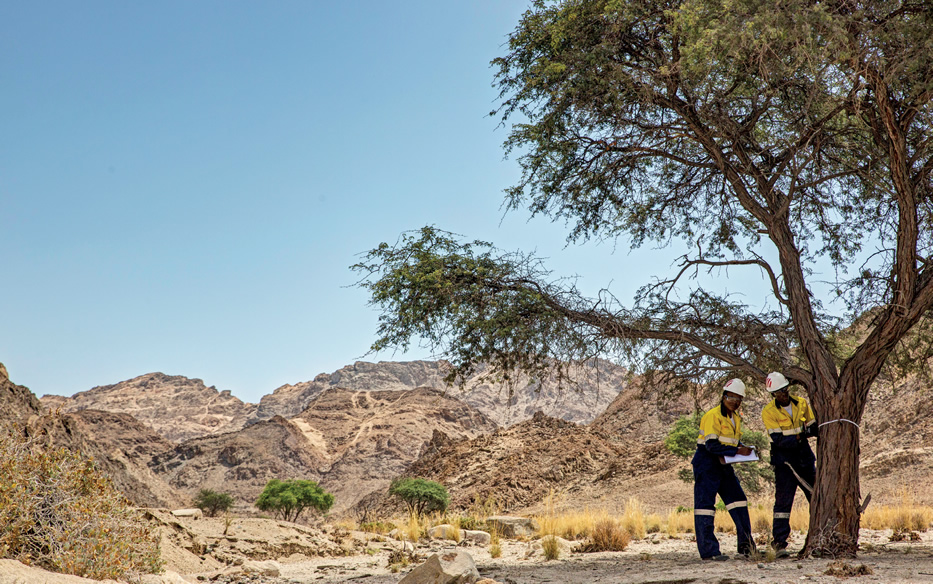Rossing Uranium

The Rössing Uranium mine
Uranium was discovered in the Namib Desert in 1928, but it was not until intensive exploration in the late 1950s that much interest was shown in the area. After discovering numerous uranium occurrences, Rio Tinto secured the rights to the low-grade Rössing deposit in 1966. Ten years later, in 1976, Rössing Uranium, Namibia’s first commercial uranium mine, began operating and celebrated its 40th year of production in 2016.
History and location of Rössing
Uranium was discovered in the Namib Desert in 1928, but it was not until intensive exploration in the late 1950s that much interest was shown in the area. After discovering numerous uranium occurrences, Rio Tinto secured the rights to the low-grade Rössing deposit in 1966. Ten years later, in 1976, Rössing Uranium, Namibia’s frst commercial uranium mine, began operating and celebrated its 40th year of production in 2016.
Today, Namibia has two signifcant uranium mines, which together provide just more than 5 per cent of the world’s uranium oxide mining output; Rössing Uranium produces about 2.5 per cent of the world’s output.
The mine has a nameplate capacity of 4,500 tonnes of uranium per year and, by the end of 2016, had supplied a total of 130,500 tonnes of uranium oxide to the world.
The mine is located 12 km from the town of Arandis, which lies 70 km inland from the coastal town of Swakopmund in Namibia’s Erongo Region. Walvis Bay, Namibia’s only deep-water harbour, is located 30 km south of Swakopmund.
The mining operation is located in a hyper-arid environment. Insolation at Rössing Uranium is high, and as a result, daytime temperatures ranges are wide, especially during May and September, when the difference between minimum and maximum temperatures exceeds 20ºC daily.
The lowest temperature is normally recorded during August, but frost is rare. The highest temperature is normally recorded in the late summer, particularly in March.
The mine site encompasses a mining licence and accessory works areas of about 180 km2, of which 25 km2 is used for mining, waste disposal and processing.
Mining is done by blasting, loading and hauling from the main open pit, referred to as the SJ Pit, before the uranium-bearing rock is processed to produce uranium oxide. The open pit currently measures 3 km by 1.5 km, and is 390 m deep.
Our partnerships and stakeholders include individual citizens and their communities as well as nongovernmental organisations, small-scale enterprises and multinational corporations. Thus, the benefts of our operations are felt locally, nationally, across the African continent and internationally.

For more information:
Leah Von Hagen
General Manager Organisational Resources
Email:RUL.communications@riotinto.com

The mine is located in a hyper-arid environment. We continue to monitor the vegetation and water levels in the Khan River to prevent over-abstraction.